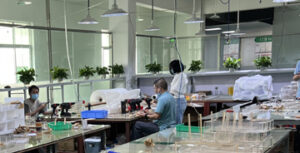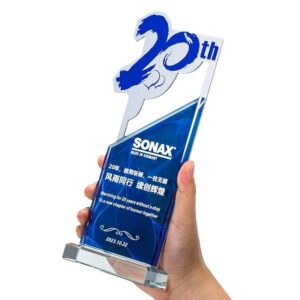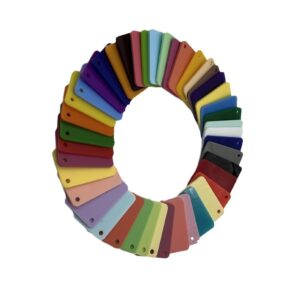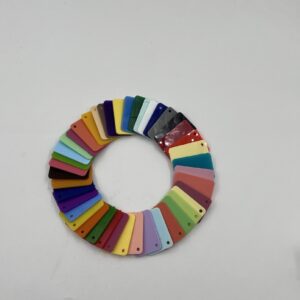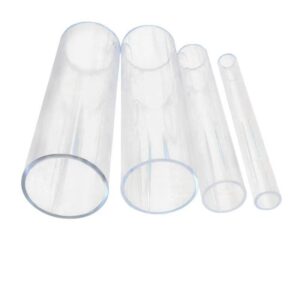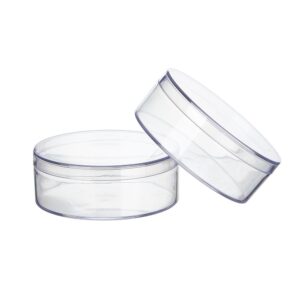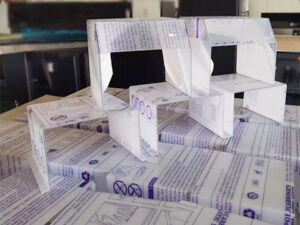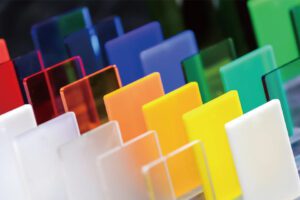Summary
The distinction between budget and premium acrylic products is crucial for artists, designers, and consumers who seek quality and durability in their projects. Acrylic, a versatile thermoplastic known for its clarity and strength, is commonly used in various applications, including art supplies, home décor, and industrial uses. The differences in composition, performance, and price between budget and premium options highlight the importance of informed purchasing decisions, impacting both the aesthetic and functional outcomes of projects.
Budget acrylic products typically contain lower concentrations of binders and pigments, resulting in less vibrant colors, reduced durability, and diminished resistance to fading and wear over time. In contrast, premium acrylics boast higher pigment loads and specialized additives that enhance their performance in demanding environments. This differentiation becomes especially significant in professional applications, where quality can influence the longevity and overall appearance of the finished work.
Several factors contribute to the notable differences between budget and premium acrylic products, including material composition, surface quality, finishing techniques, and overall durability. Premium acrylics are often manufactured with rigorous quality control processes, ensuring clarity and consistency, while budget options may exhibit imperfections and lower optical quality. As sustainability becomes increasingly important, premium brands are also responding by integrating eco-friendly materials and manufacturing practices into their products, further distinguishing themselves from budget alternatives.
Understanding how to spot these differences empowers consumers to select the right acrylic products for their needs, whether for casual crafting or professional artistry. Knowledge of the characteristics that define quality acrylics ensures that artists can achieve their desired outcomes while making a worthwhile investment in their materials.
Table of Contents
Composition
Acrylic paints and products vary significantly in composition, particularly when distinguishing between budget and premium offerings.
Key Components
The primary ingredient in acrylic products is polymethyl methacrylate (PMMA), which can be processed through various methods such as casting and extrusion. The quality of acrylic is often determined by the molecular weight of the PMMA, with higher molecular weights providing better clarity, strength, and weather resistance.
Additives and Mediums
Premium acrylics often include specialized additives designed to enhance performance and longevity. For example, premium paints may contain mildew inhibitors, tailored for high-moisture environments, which help prevent mold growth on exterior surfaces. In contrast, budget acrylics may lack these additives, resulting in a shorter lifespan and inferior performance. Additionally, mediums in acrylic formulations allow artists more flexibility. These mediums can be adjusted incrementally to achieve desired effects, whereas budget paints may have fewer options and less versatility.
Performance and Stability
A critical aspect of composition is the stability of the paint film. It is recommended not to thin premium acrylics with more than 25% water to maintain film stability and prevent degradation. Budget acrylics often do not perform as well under such conditions, leading to issues like peeling or poor adhesion, particularly in challenging environments.
Comparison of Uses
Premium acrylics are generally better suited for professional applications due to their superior pigment density, predictable color shift from wet to dry, and overall durability. Budget acrylics, while suitable for basic projects, may not withstand demanding conditions or provide the same level of finish, limiting their use in more professional settings. Understanding these compositional differences is essential for consumers and artists looking to make informed choices about their acrylic products.
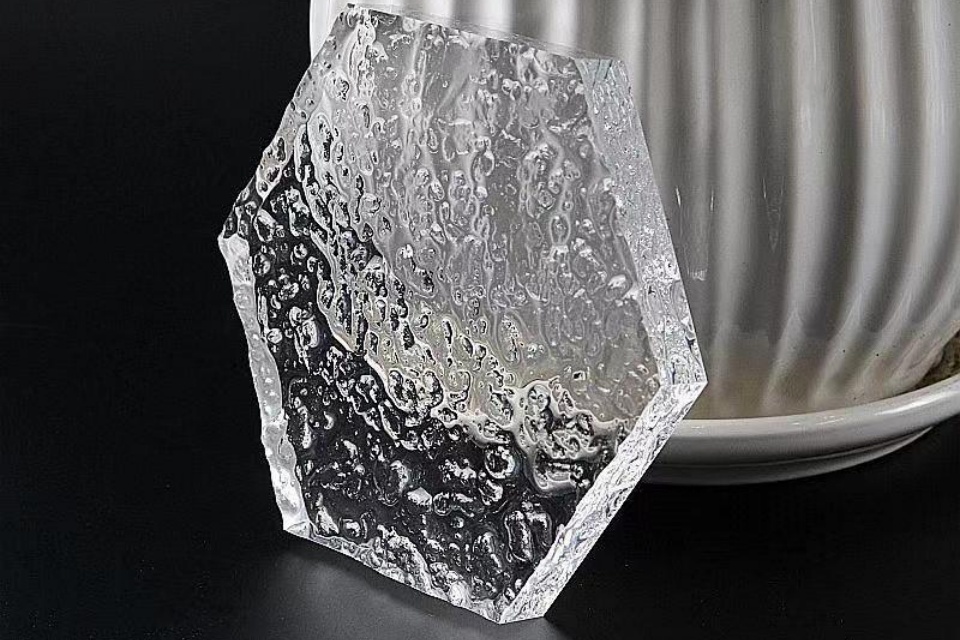
Manufacturing Process
The manufacturing process of acrylic involves several key methods, primarily extrusion and casting, each offering distinct characteristics and applications.
Acrylic Production Methods
Extrusion
Extrusion is a continuous manufacturing process where acrylic is heated into a superhot liquid resembling thick corn syrup and then forced through a nozzle. This process results in acrylic sheets that can vary in properties depending on the direction of extrusion, leading to heterogeneous materials. The extruded acrylic is typically less expensive, making it a popular choice for various applications, although it may not possess the same level of strength and clarity as cast acrylic.
Casting
In contrast, casting involves pouring the heated acrylic liquid into a mold. This method is more labor-intensive and costly but produces a more homogeneous material that is sturdier and has superior optical clarity. Cast acrylic is more versatile in applications that require laser cutting and is less prone to bending, chipping, or melting during fabrication.
Continuous Casting
A notable variation is the continuous casting method, where acrylic monomers are continuously fed into a polymerization zone between two stainless steel belts. This method allows for the production of long, uniform sheets, enhancing manufacturing efficiency and lowering costs for certain applications.
Steps in the Manufacturing Process
The production of acrylic sheets follows several critical steps:
- Sourcing Raw Materials: The primary ingredient is methyl methacrylate (MMA), a liquid monomer that must be of high purity to ensure the final product’s transparency and quality.
- Polymerization: MMA is polymerized to create solid acrylic. This step involves precise control over temperature, pressure, and time to achieve optimal results.
- Cutting: After polymerization, the solid acrylic is cut to required sizes using saws or laser machines. The cutting process ensures that the sheets meet precise dimensions.
- Finishing: This includes polishing and buffing, which enhance the sheets’ appearance and functionality. These finishing steps are crucial for preparing acrylic for various market applications.
Quality Control and Testing
Quality control plays a vital role in the manufacturing process. Methods include visual inspections for defects, mechanical testing for stress resistance, and chemical testing for durability against various substances. Maintaining high standards is essential to meet customer expectations and uphold the manufacturer’s reputation.
Future Trends
Recent trends in acrylic manufacturing are focusing on sustainability and efficiency. Research is ongoing to develop environmentally friendly processes and improve recycling methods for acrylic materials, reflecting the industry’s response to increasing environmental concerns. As applications for acrylic expand, the production rate of acrylic sheets has seen a gradual annual increase, driven by the material’s versatility and robust qualities.
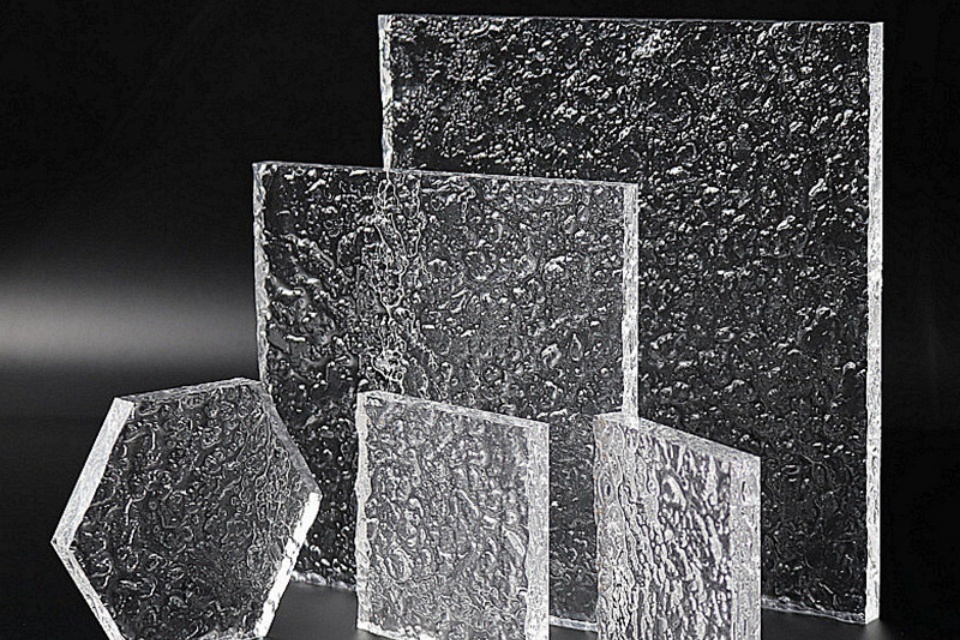
Physical Characteristics
When evaluating acrylic paints, understanding their physical characteristics is essential to discern between budget and premium options. Key attributes to consider include consistency, pigment load, opacity, and overall finish.
Consistency
Acrylic paints come in various consistencies, each suited for different painting techniques.
Heavy Body Acrylics
Heavy body acrylics have a thick and buttery consistency, which allows them to retain brushstrokes and facilitate impasto techniques. These paints are ideal for artists looking to create textured, three-dimensional effects in their artwork.
Soft Body Acrylics
Soft body acrylics offer a medium consistency, flowing smoothly off the brush. They are versatile, catering to a range of painting styles, and are often preferred by beginners for their ease of use. This type of acrylic allows artists to achieve both detailed work and broader brush strokes.
Pigment Load and Color Intensity
The quality of acrylic paint significantly depends on its pigment concentration. Premium acrylics typically contain a higher concentration of pigment, resulting in better coverage, vibrancy, and color intensity. This difference means that premium paints often dry more opaque and with a matte finish, while budget options may appear chalky or less saturated due to a higher filler content.
Opacity and Lightfastness
Opacity is another crucial factor. Higher-quality acrylics, particularly those labeled as professional or artist-grade, ensure vibrant coverage and strong opacity, even when diluted. They also boast excellent lightfastness, meaning colors resist fading over time, which is particularly important for artists concerned about the longevity of their work.
Finish
The finish of acrylic paint can vary from glossy to matte, depending on the formulation and quality. Professional-grade paints tend to dry to a satin or matte finish, offering minimal glare and enhancing the visibility of details in the artwork. In contrast, budget paints might not achieve the same level of aesthetic quality, often resulting in a less desirable finish.
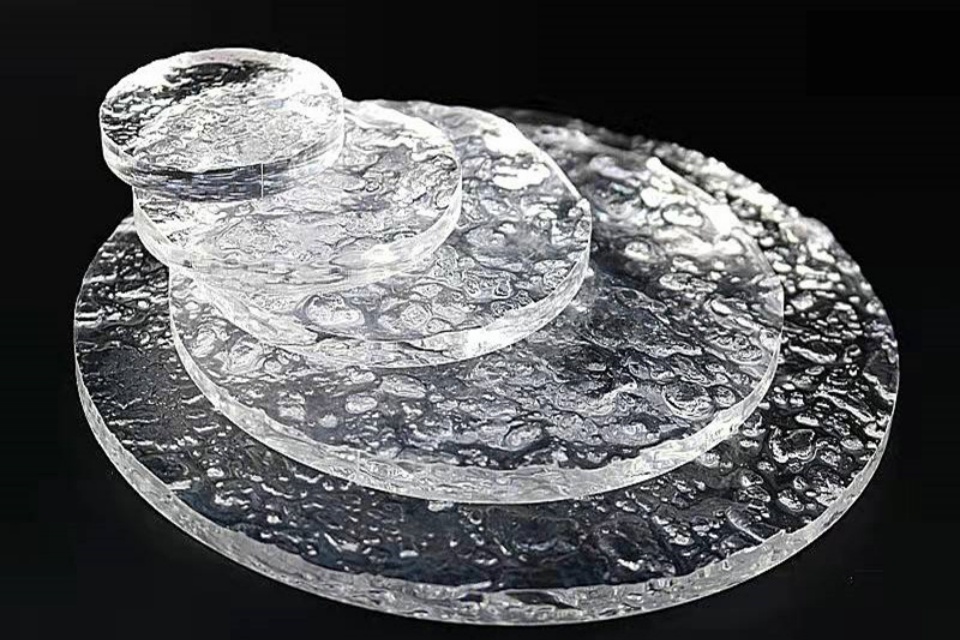
Performance
Durability in Varied Conditions The performance of acrylic paints can significantly vary between budget and premium options, particularly in regions like Littleton, where the climate is characterized by over 300 days of sunshine, low humidity, and notable temperature fluctuations. Premium acrylics are engineered for resilience, providing superior resistance to fading, cracking, and moisture, which are crucial attributes given Littleton’s extreme weather conditions. In contrast, cheaper paints may show signs of wear, such as chalking due to UV damage, within just one summer, as evidenced by a case in Ken Caryl where budget paint deteriorated quickly after a single season of exposure.
Coverage and Application
In terms of coverage, premium acrylics boast high pigment loads that ensure vibrant, quick application with strong opacity, even when diluted. This characteristic allows artists to achieve their desired aesthetic with fewer layers compared to budget alternatives, which often require more product to attain similar results. Moreover, premium paints dry to a satin finish with minimal glare, making them suitable for both detailed and bold applications.
Lightfastness and Permanence
Lightfastness is another critical performance aspect, where premium acrylics are labeled as permanent once dry, showing excellent resistance to fading over time. User reviews indicate that paintings created with high-quality acrylics retain their vibrancy for over 20 years, demonstrating their long-term reliability in various lighting conditions. This longevity stands in stark contrast to budget paints, which may fade and lose color integrity much sooner.
Mechanical and Chemical Resistance
Premium acrylics also exhibit superior mechanical properties, including impact strength and tensile strength, crucial for artworks that may be subjected to physical stress. Additionally, they are formulated to be water-resistant and adhere well to various surfaces, including canvas, wood, and acrylic paper, ensuring that the artwork remains intact and vibrant through different environmental challenges.
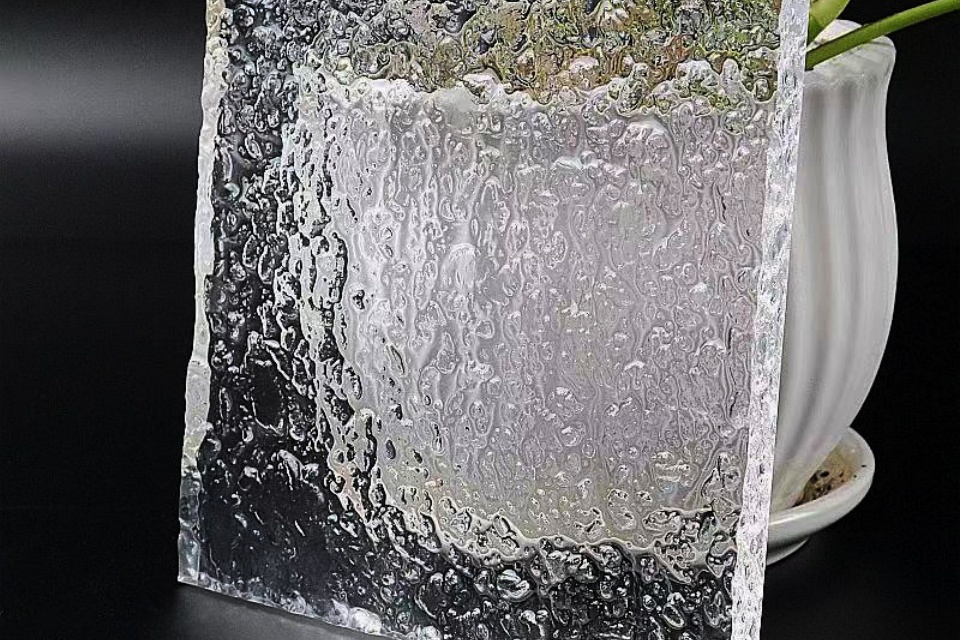
Applications
Acrylic, commonly referred to as plexiglass, is a versatile thermoplastic material with a wide array of applications across various industries. Its exceptional clarity, lightweight nature, and high impact resistance make it a popular alternative to glass for numerous uses.
General Uses
Acrylic is frequently utilized in the production of various products, including lenses, medical devices, furniture, and LCD screens. Its clear quality allows it to serve as a suitable replacement for glass, particularly in applications where weight, cost, and strength are significant considerations. For example, acrylic is used in submarine periscopes and airplane windows, highlighting its historical significance and reliability.
Retail and Display
In the retail environment, acrylic is favored for creating engaging display cases and fixtures. Retail displays can significantly influence customer purchasing decisions, and acrylic’s durability and flexibility make it an ideal choice for creating visually appealing displays that enhance product visibility. Common applications include point-of-sale displays, model making, signage, and custom enclosures for fragrance or cosmetic products. The ability to thermoform acrylic allows for unique designs that cater to various retail needs.
Manufacturing and Fabrication
The manufacturing of acrylic products often involves techniques such as laser cutting and CNC routing. Acrylic sheets can be easily shaped when heated, making it a favorite among makers and in educational settings. Its ease of manipulation allows for the creation of intricate designs while maintaining a polished finish.
Architectural Applications
In construction and architectural design, acrylic is used for enclosures, barriers, and decorative elements. Its strength and lightweight properties make it an attractive choice for both structural and aesthetic applications in buildings. The growing demand for sustainable materials in construction also boosts acrylic’s appeal as a viable option for various applications.
Pricing
In the acrylic market, pricing is influenced by various factors including material quality, processing methods, and market dynamics. Typically, lower-quality acrylic paints and products can be found at price points beginning at $1 per square inch, especially for emerging artists seeking to establish their presence in the market. In contrast, premium acrylic products often command higher prices due to superior raw materials and manufacturing processes, with prices for canvas pieces starting at $2-$3 per square inch.
Factors Influencing Price
Several key factors contribute to the pricing of acrylic products:
- Material Quality: The quality of raw ingredients significantly impacts the price of acrylic products. Higher-quality materials lead to better performance and durability, justifying a premium price. For instance, cast acrylic is generally regarded as superior to extruded acrylic, leading to variations in cost based on the manufacturing method used.
- Thickness and Size: The thickness of acrylic sheets also plays a vital role in determining price, as thicker sheets require more raw material and complex processing. Furthermore, larger sizes will naturally be more expensive than smaller counterparts.
- Market Dynamics: The acrylic market is susceptible to fluctuations in the global petrochemical market, which can affect the pricing structure due to the dependency on petrochemical feedstocks for production. Geopolitical events and economic shifts can introduce volatility, making long-term pricing stability challenging for manufacturers.
- Brand Reputation: Established brands with a reputation for quality may charge higher prices due to customer trust and perceived value. This brand loyalty can significantly influence pricing strategies in the acrylic market.
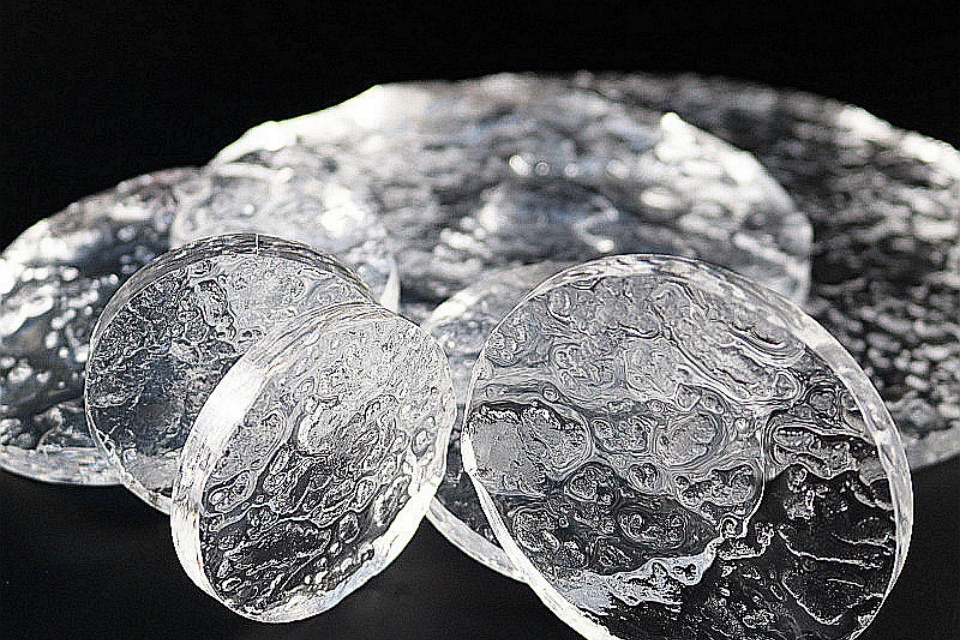
How to Spot the Difference
When distinguishing between budget and premium acrylic products, several key factors can help identify quality differences. Understanding these characteristics allows consumers to make informed purchasing decisions based on their specific needs.
Material Composition
The primary difference between budget and premium acrylic lies in the amount of binder and pigment used in the paint formulation. Premium acrylics typically contain a higher concentration of these components, resulting in richer colors and better durability. This quality translates to improved resistance to fading and wear over time, making premium options a better long-term investment.
Surface Quality
Quality control is crucial in the manufacturing of acrylic sheets. Premium acrylic often undergoes rigorous testing methods, including visual inspections and mechanical testing, to ensure it meets high standards of clarity and consistency. In contrast, budget acrylic may display imperfections, such as rough edges or surface marks, which can detract from the overall aesthetic and functionality.
Finishing Techniques
The finishing techniques employed in producing acrylic sheets significantly affect their quality. Premium acrylic products often feature processes such as polishing, cutting, and laser cutting, which enhance clarity and ensure precise dimensions. Budget alternatives may not undergo such thorough finishing processes, leading to a less polished appearance.
Clarity and Transparency
One of the most notable differences is the clarity of the acrylic material. Premium acrylic sheets are designed to provide outstanding clarity, making them ideal for applications that require transparency, such as display cases and windows. Budget acrylic may exhibit cloudiness or other optical distortions, reducing its effectiveness for such uses.
Weight and Thickness
When assessing acrylic products, weight and thickness can also serve as indicators of quality. Premium acrylic is often thicker and heavier, contributing to its durability and resistance to impact. Conversely, budget acrylic may be lighter and thinner, which can lead to a greater likelihood of breakage and deformation.
Color Consistency and Range
Color consistency is another vital aspect to consider. Premium acrylic brands ensure uniformity in color behavior across different hues, offering a broad range of primary, secondary, and specialty colors. This consistency allows for more versatile applications and aesthetically pleasing results. Budget options may lack this variety and may exhibit inconsistencies in color mixing and layering.
By evaluating these characteristics-material composition, surface quality, finishing techniques, clarity, weight, and color consistency-consumers can effectively spot the differences between budget and premium acrylic products, ultimately guiding their choices based on quality and value.
Marketing Strategies
Marketing strategies for acrylic products, particularly in the budget versus premium segment, play a crucial role in connecting with target audiences and driving sales. A comprehensive approach incorporates various elements aimed at enhancing brand visibility and fostering customer loyalty.
Target Market Identification
Understanding the target market is essential for any effective marketing strategy. This includes defining ideal customers, such as artists, decorators, and businesses in need of acrylic products for display and signage. Detailed research on competitors and the unique selling propositions that differentiate a brand helps to carve a niche in the market.
Multi-Channel Marketing
Employing a multi-channel marketing strategy can significantly enhance outreach efforts. Brands should utilize social media platforms, email marketing campaigns, content marketing, and local events to effectively communicate their value propositions. Engaging with local influencers, designers, and community events can further build trust and visibility within target markets.
Pricing Strategy
A coherent pricing strategy is vital for establishing trust and aligning with supply-demand dynamics. Consistency in pricing helps to justify the value of both budget and premium acrylic products, ensuring that customers perceive the worth of their purchases. Businesses should also adapt their pricing to reflect the financial climate and economic conditions affecting their target market.
Unique Selling Propositions
Offering unique features or services can distinguish a brand in a crowded market. For example, premium acrylics are marketed for their durability, clarity, and customization options, whereas budget options emphasize cost-effectiveness. Highlighting these differentiators in marketing campaigns can attract diverse customer bases.
Customer Experience Enhancement
Creating a positive customer experience can lead to repeat business and customer loyalty. Retailers are encouraged to improve in-store experiences and provide personalized services that help customers visualize how acrylic products fit into their projects or homes. Such enhancements can increase the likelihood of a sale.
Monitoring and Optimization
Finally, tracking and optimizing marketing campaigns is essential to ensure effectiveness. Regular analysis of campaign performance allows businesses to make informed adjustments, enhancing overall marketing efficacy and improving return on investment.
Recent Innovations and Trends
The acrylic market has witnessed significant advancements in recent years, driven by a confluence of technological innovations and evolving consumer preferences. A key area of focus has been the integration of sustainability into product development. Companies are increasingly prioritizing eco-friendly materials, such as low-VOC acrylic polymers, in response to rising environmental awareness and regulatory pressures. This shift aligns with global sustainability goals and has prompted manufacturers like AkzoNobel to introduce lines of low-VOC acrylic paints aimed at the building and automotive industries.
In addition to sustainability, the market is experiencing a surge in technological innovations, particularly in the fields of AI and automation. These advancements are enhancing manufacturing processes, improving product customization, and enabling more efficient supply chains. For instance, the incorporation of Industry 4.0 solutions is streamlining production, which is crucial for meeting the increasing demand for personalized and high-performance acrylic products.
Furthermore, bio-based raw materials and biodegradable formulations are gaining traction in the acrylic thickener segment of the market. The emphasis on bio-derived acrylic polymers reflects a broader trend toward sustainable chemical manufacturing, driven by regulatory incentives and consumer demand for greener products. Notably, the market for acrylic thickeners in the United States is transforming as stakeholders adapt to these trends, focusing on innovative applications that minimize environmental impact while maintaining performance standards.
In high-growth regions such as Asia-Pacific, rapid industrialization and urbanization are further fueling demand for advanced acrylic formulations. Companies are leveraging these trends to introduce new products that align with consumer preferences for sustainable and functional materials. For example, BASF’s expansion in China to boost production capabilities illustrates the market’s response to rising demands in key areas.


